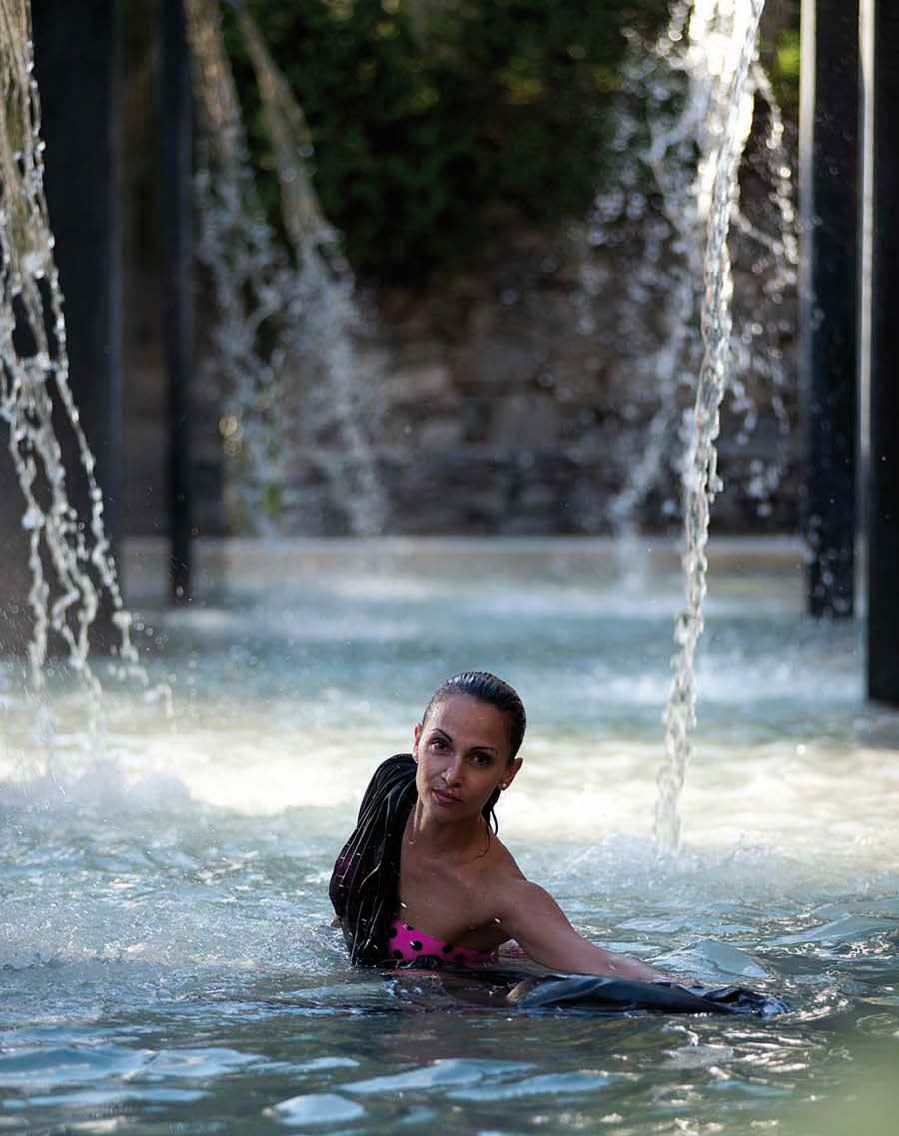Ischia: An Ancient Island Apothecary

For more than two millennia, the thermal waters of Ischia have been known for their extraordinary healing properties. Here, waters issuing from more than a hundred springs are able to ameliorate ailments such as rheumatism, arthritis, osteoporosis, sciatica and a host of respiratory illnesses, allergies and skin conditions. Ischia’s waters’ magical properties were first recognized by the ancient Greeks, who established a trading hub on the island in the VIII century B.C.
It seems like a veritable who’s who of Greek and Roman poets and commentators such as Virgil, Homer, Ovid, Statius and Lucan, to name a few, described Ischia as having been inhabited by giants. One in particular, named Typhon was the monstrous son of Gaea, goddess of the Earth and Tartarus, god of the Underworld. He was the personification of volcanism since flames gushed from his mouth. In a presumptuous move, he challenged Zeus to a fight, which he lost. Seeking a suitable punishment for the hothead, Zeus buried him under the island of Ischia. Unable to endure the humiliation, the angry giant struggled to free himself, spewing forth flames and boiling water and shaking the earth with his restless movement. Frustrated that he could not escape his fate, he began to cry so intensely that Aphrodite was moved to free him, turning his tears into waters with healing powers.
Not surprisingly, temples and shrines were erected around the springs dedicated not only to Aphrodite but to Apollo, a god with deep associations with health and healing. Apollo was known by a number of epithets, including Akesios, from the Greek work for “healing,” which may have in part inspired the island’s current name. Ischia’s healing waters attracted people seeking wellness, however, the island’s penchant for sudden seismic outbursts discouraged ambitious building programs and continuous settlement. Although long attributed to divine machinations, Ischia’s pharmacological bounty is a byproduct of the island’s violent birth and ongoing seismic activity. Formed over a 150,000-year-period, this complex volcanic system began with an eruption that left a massive caldera, the perimeter of which roughly encircles the island. In time, eruption after eruption left its mark on the island in the form of craters and lava flows.
Geologically speaking, the 789-meter-high Mt. Epomeo, which covers some 35 percent of Ischia, is one of several side by side “horsts” or wedges of a once-contiguous seafloor that was uplifted, then split by tectonic activity. The horsts are separated by faults through which flow gases, vapors and the thermal waters for which the island is famous.
Emanating from underground reservoirs fed by rainwater, the waters are warmed by heat sources located deep within the Earth. The waters are transformed into steam, which rises to the surface, enriched along its journey by the minerals contained in the soil As a result, the waters gushing out are alkaline or acidic and contain varying amounts of calcium, magnesium, hydrogen carbonate, sodium, sulfur, iodine, chlorine, iron, potassium and microelements of other active substances, including radon. It is the disparate chemical composition of the overlying sediments through which the steam and thermal waters make their way that dictates their healing properties.
Ischia’s water is rich in noble elements and mineral salts: sodium, one of the basic elements for the vital activity of living beings, potassium, essential for muscle dynamics, sulfur, essential for joint elasticity and calcium which has a sedative action on the nervous system. The radioactive nature of the waters was discovered in 1918, when Marie Curie came to Ischia with fellow scientist to study the thermal springs. She determined that the waters bore various components of radium, radon, thorium, uranium and actinium. The most important therapeutic element is radon, a gas dissolved in the water originating from an alpha particle emanated by an atom of radium. The radioactivity is so low that it is not harmful, a sheet of paper is enough to stop it and it has a short half-life so it isn’t able to bio-accumulate.
THE BOARD
An exploration into how the geology of Italy influenced its art, architecture, religion, medicine, literature and just about everything else.
Imagine if you could see the River Styx, bathe in the Fountain of Youth, collect water which enhances fertility, wear a gem that heals bodily ailments, understand how our health is affected by geomagnetic fields, come close to the flames of Hell on Earth and much, much, more. Know something? These things exist—on Earth— today—in Italy and you can visit them. Ann C. Pizzorusso reveals how Italy’s geology has affected its history, art, religion, medicine and culture. Her beautiful book is packed with facts, full-color photos, paintings, sketches and illustrations. She follows in the tradition of writers such as John McPhee and Steven Jay Gould who are able to present complex aspects of geology in a friendly, almost poetic style.
Pizzorusso’s real genius, however, is in her ability to stitch together widely diverse topics— such as gemology, folk remedies, grottoes, painting, literature, physics and religion—using geology as a thread. Quoting everyone from Pliny the Elder to NASA physicist Friedemann Freund, Pizzorusso’s work is solidly backed scholarship that reads as easily as a summer novel.
Wonderfully illustrated and crammed with information, this book is perfect for the traveler (armchair or actual) wishing to visit these exciting places, trivia buffs and scholars alike.
AWARDS
Best Book Cover 2014, Eric Hoffer Awards
Finalist, Best Art Book, Eric Hoffer Awards
USA Book News Awards for 2014, 1st Place: Best Science Book, 1st Place: Best Interior Design,
Finalist: Best Non-Fiction
New York Book Festival Gold Medal Wild Card Category
London, UK Book Festival Gold Medal Wild Card Category
Foreword Reviews Gold Medal best Nature book
Los Angeles Book Festival Gold Medal Wild Card Category
Paris, France Book Festival Gold Medal Wild Card Category
Silver Medal for best first book, Independent Book Publishers Association
Finalist 50 Books/50 Covers design awards















